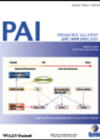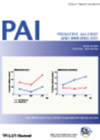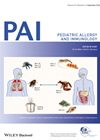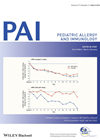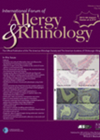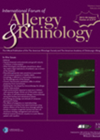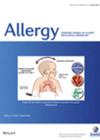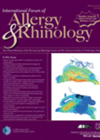
Journal Reviews
Blocked nose in children with allergic rhinitis
Nasal obstruction is a classic symptom in children with allergic rhinitis. While the nasal obstructive disorders including septal deformity, turbinate hyperplasia and adenoidal enlargement are widely recognised in adult nasal blockage, their relationship with paediatric allergic rhinitis however, is scarcely...
Growing up smelling the roses
How often do we ask about sense of smell in children? Undoubtedly, the olfactory function is seldom formally assessed in the paediatric population, although evidence exists to suggest its potential links with handicap in children’s learning and development. This large...
Is the lack of sunshine the reason behind allergic rhinitis?
Deficiency in Vitamin D, an in vogue immunomodulator, has been shown in emerging data to have a substantial pathogenetic role in allergic related diseases, particularly asthma. The concept of a shared upper and lower airway has allowed the natural extrapolation...
Is Dymista® useful for paediatric allergic rhinitis?
Allergic rhinitis (AR) affects up to 14.6% of the paediatric population. Whilst a recent Cochrane review has considered the evidence for intranasal corticosteroids as `weak and unreliable’ in paediatric AR, this product is a novel formulation combining Fluticasone and Azelastine...
Getting your nose dry: endoscopic vidian neurectomy – an old technique given new life
We are often faced with patients with intractable watery rhinorhea – patients with no demonstrable allergy, a diagnosis of NAR and no response to ipratropium or capsaicine. For such patients, vidian neurectomy has been devised – an old technique that...
Not so innocent, after all: a meta-analysis of the effects of intranasal corticosteroids on growth
The use of intranasal corticosteroids has revolutionised the management of allergic rhinitis and rhinosinusitis and there is now significant evidence of their safety. The problem with side-effects is that clinical studies are designed to demonstrate efficacy, but are underpowered to...
Is there a cause-and-effect relationship between allergic rhinitis and chronic rhinosinusitis?
This review examines the possible causative relationship between allergic rhinitis (AR) and chronic rhinosinusitis (CRS) that has long been proposed. Many observational and experimental studies exist, however no clear and definitive connection has been established. This is mainly due to...
Objective versus subjective – again!
The use of objective measurements of nasal airflow has a long history; however, its clinical application remains, at most, patchy. The main reason for that has been the lack of convincing studies showing a good correlation between the findings of,...

